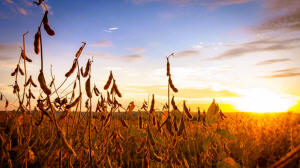|
Chris Otten, who farms near St. Libory southwest of St. Louis,
was among many who took advantage of this winter’s favorable
climate to get a jump-start on the spring season.
“It was perfect. The land couldn’t have gotten any better than
it was,” Otten told The Center Square. “And temperature-wise,
the older I get, the more I like the warm anyway. So it works
out well.”
The wheat crop is moving ahead of schedule and could give
farmers a much-needed productivity boost. Corn and soybeans are
also at or ahead of schedule, according to Otten.
But rain will be needed to complete nature’s work, and that’s
the other side of the sword. In a dry spell, roots can live on
sub-soil moisture, but at some point, they will suffer.
“There’s not much there so our crops could take a hit,” Otten
said. “I can spend all the money and do all the things and
trials I want to do but if it doesn’t rain, it doesn’t matter.”
Besides wheat, other crops getting an early start are corn and
soybeans, with great potential at a time when China’s ailing
economy is shrinking demand.
“If we continue on the path we’re on, hopefully, we’ll have more
yield and more bushels at the end of the year,” Otten said,
noting that China is one of the United States’ biggest buyers
and its struggle is taking a toll on prices.
“We need more bushels to make up for it because our costs are
kind of almost an all-time high,” he said. “It’s kind of a
Catch-22. We’re self-inflicted. The more we produce, the more
green there is, the cheaper it gets.”
With the provision of more rainfall and a warmer winter that
lets farmers get work done, these goals may be within reach for
Otten and other growers.

|
|




